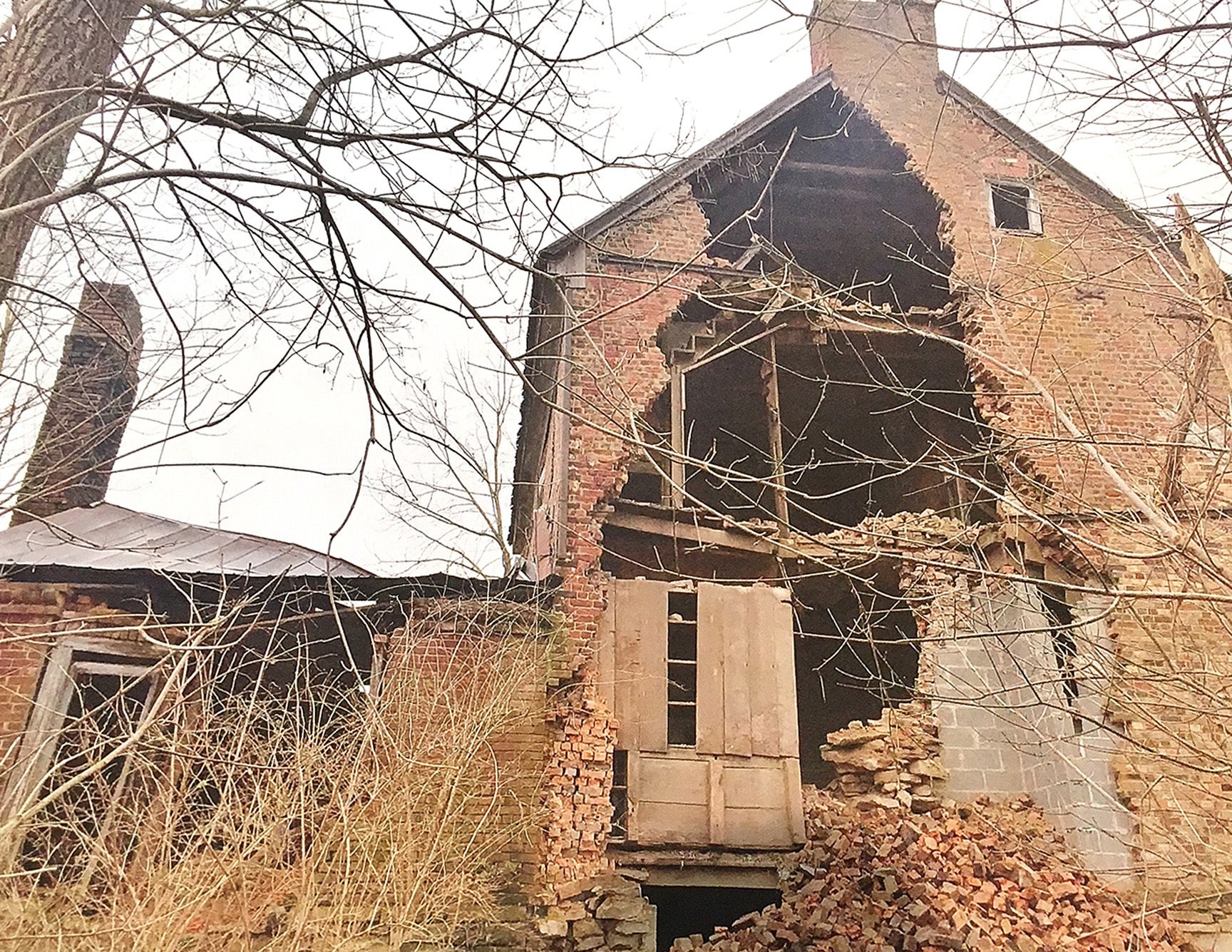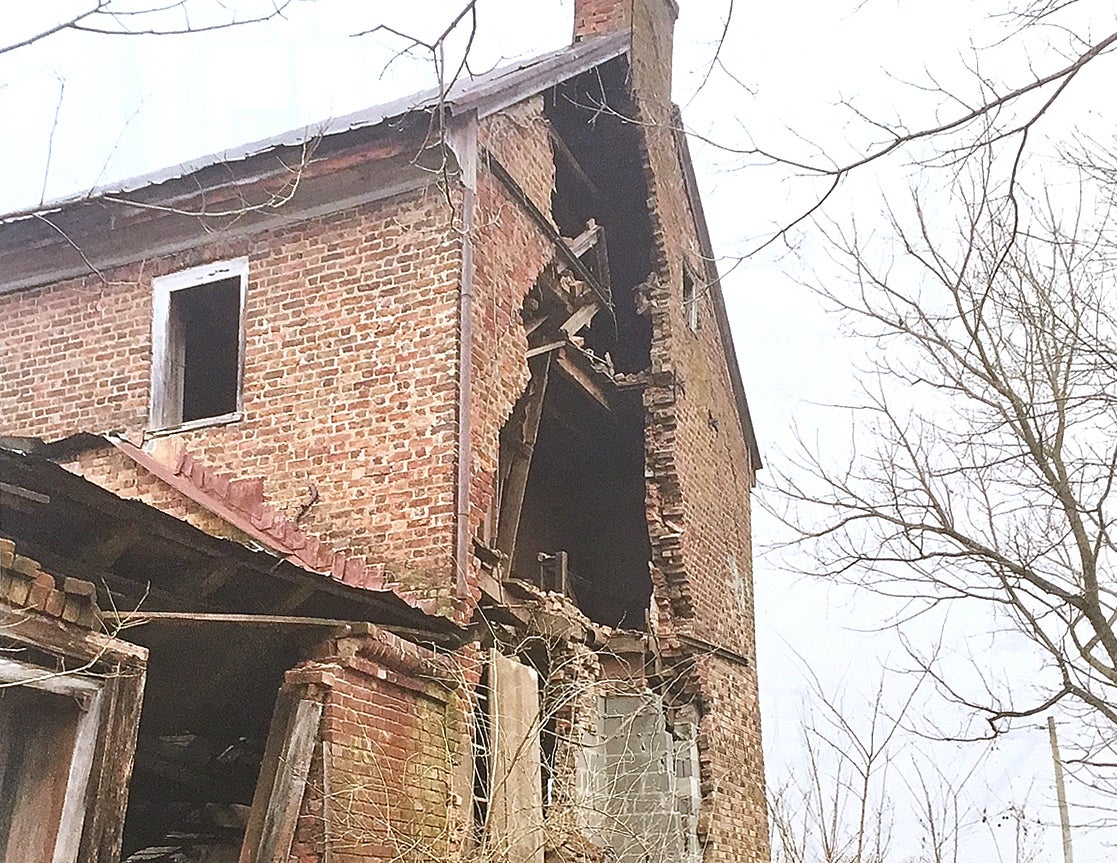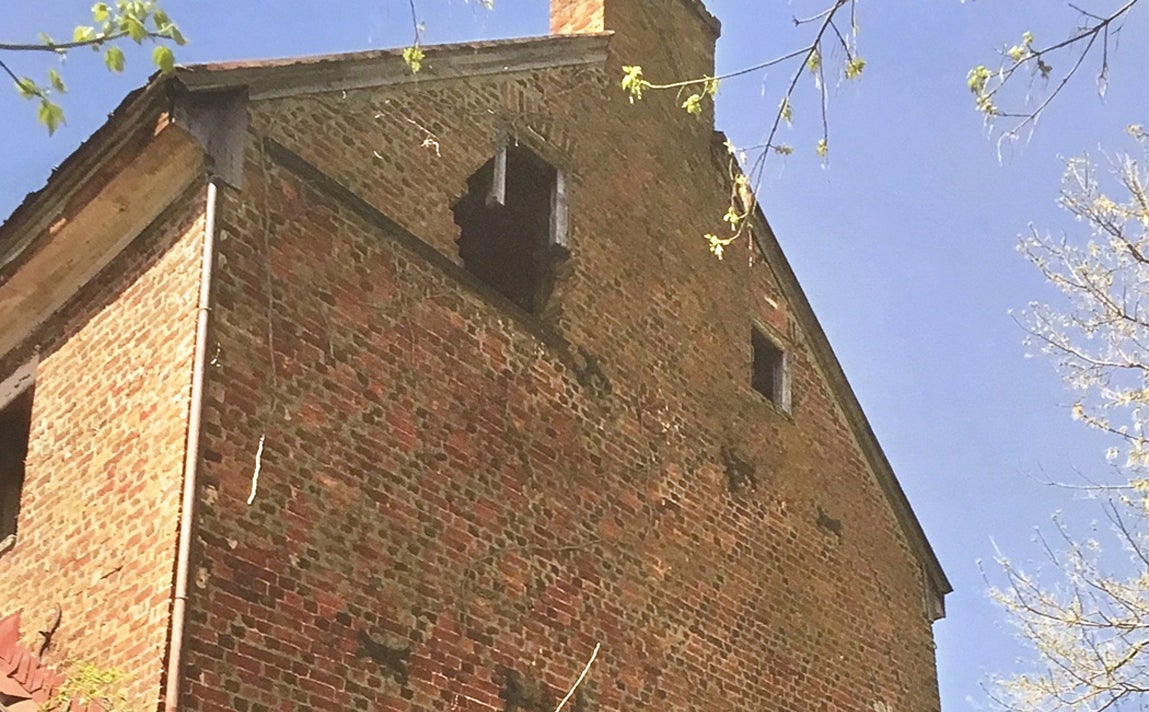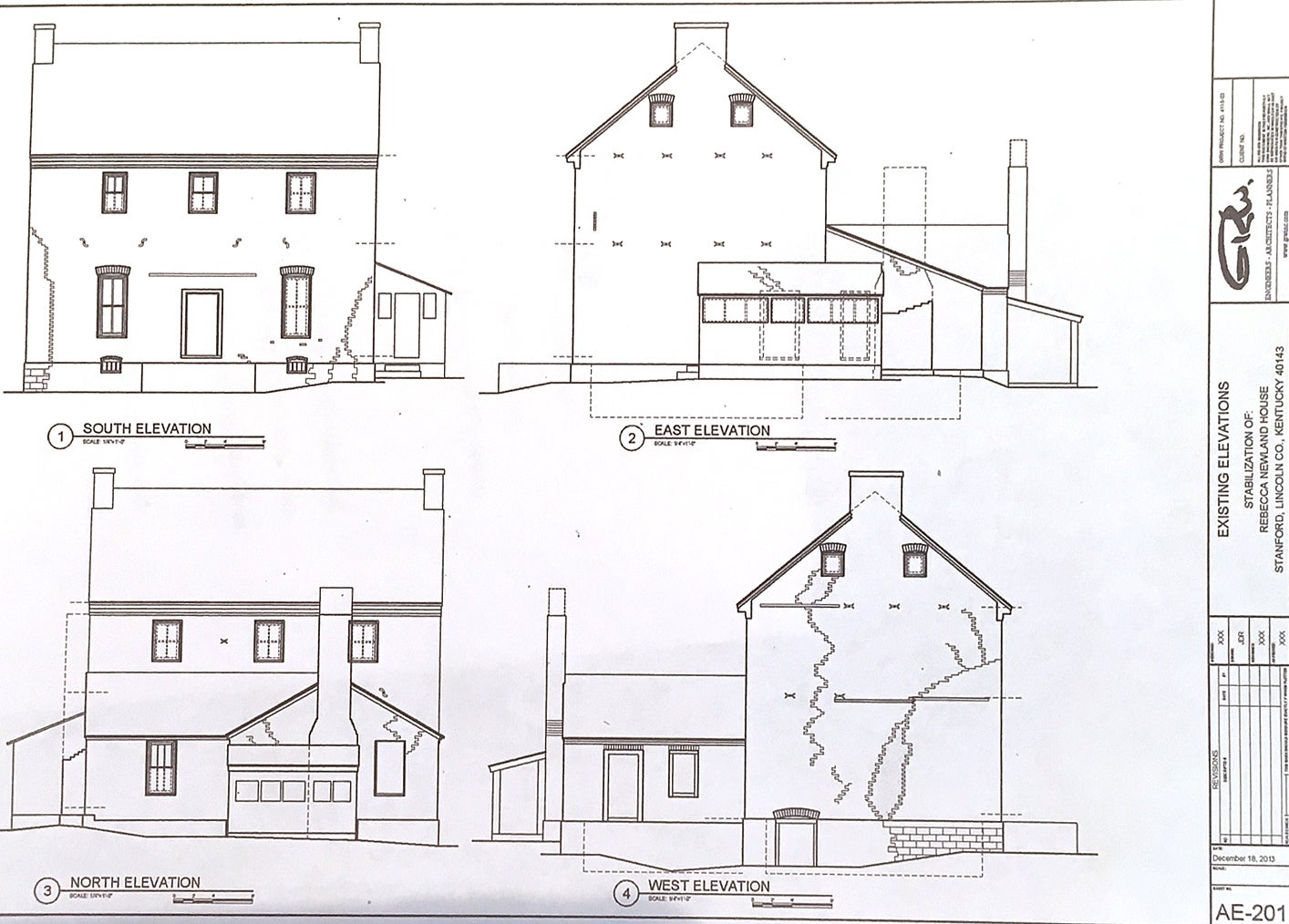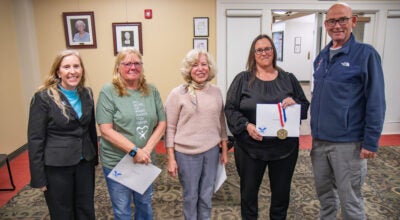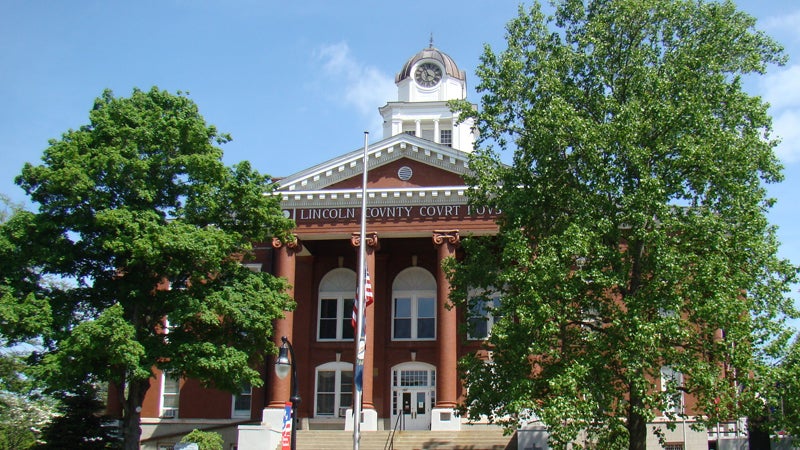Crumbling history: County takes ownership of Newland property to try and save historic house
Published 10:55 am Thursday, July 18, 2019
|
Getting your Trinity Audio player ready...
|
STANFORD — The Rebecca Newland house stands as a crumbling piece of Lincoln County history, mostly obstructed from view by overgrown trees and brush.
In lieu of a time machine, the only way to get close to seeing the house in its former glory is a grainy photograph in the book Historic Homes of Lincoln County by the late Shirley M. Dunn and an architectural plan from GRW Engineers Inc. presented to the Lincoln County Fiscal Court by local architect Garlan VanHook.
The house on Charlie Boone Road, which dates back to around 1780, was heired to Newland and her sister, Maggie Jones, by her father, John F. Stephenson, and her sister transferred her ½-interest in 1931. Newland lived there until 1950 when she sold the property.
The property has since seen three new owners. On July 2, 2019, the historic piece of land became the official responsibility of Lincoln County.
The county was deeded the property by the Commonwealth of Kentucky, on behalf of the Transportation Cabinet, Department of Highways, which became owner of the property in 2000. The transfer of the house, which was an inter-government transfer where no monies were exchanged, includes the house and the 1.92 acres it sits on.
That transfer of ownership to Lincoln County prompted the fiscal court to declare an emergency situation at its July 9 meeting, which allows it to hire VanHook of VanHook Architectural Services, giving him the authority to engage contractors qualified to do stabilization and preservation work on the house.
“Based on the images I’ve shared with you … the chimneys kind of hanging up there by the rafters of the building and I think it’s imperative that we get out there and at least do some structural shoring and then salvaging the brick that has fallen out,” VanHook said. “It’s an emergency to save this 240+ year old building.”
During court discussion, VanHook explained that the property came to be in the Transportation Cabinet’s possession back when New U.S. 150 and the dam were being built. He said that the Heritage Council alerted them of the property and that “they reached their right-of-ways around the corner and grabbed this piece of property” along with the other purchases of land obtained for doing the highway and the dam. VanHook related that the Transportation Cabinet got federal funds appropriated of around $700,000 to restore and salvage the building.
But there was no restoration or salvaging of the property, and the house continued to deteriorate. Now, all that’s left of that $700,000 is approximately $400,000.
“They spent all that other money studying and allowing it to fall in on itself without making any headway in the real work that needed to be done,” VanHook said. “The Heritage Council realized that the Transportation Cabinet had decided that they weren’t as interested in it as they originally thought they were and, when they began to neglect the house more, the Heritage Council stepped forward and said, ‘Hey, what about the idea of it being transferred.’ We began having conversations about it maybe being transferred … not to public use, but to private use.”
Talks of a transfer of the property to the county started back as early as 2015. At that time, while the house was in a state of deterioration, the exposure to the elements had been limited to just minor holes in the walls.
“Even when we wrote the agreement, that hole was basically still together and the tie rods weren’t bent and none of that had been damaged,” said VanHook. “With the original hole, water wasn’t damaging 200-year-old wood, now there is a large hole and you have stair treads exposed and wood is being soaked … all of these things.”
The fiscal court passed a resolution last fall to accept the $400,000 from the state to proceed with stabilizing the Newland house but it wasn’t until now that all the memoranda of agreement (MOA) papers were signed.
“So their neglect of just not passing the document around and signing it has caused us to have some additional damage,” VanHook said. “Obviously it’s going to take more of our $400,000 to repair that end wall than it would have if they had quickly signed and allowed us to start working. I believe we have a bit of an emergency because of the Transportation Cabinet’s delay in fulfilling their obligations on our MOA we sent to them many months ago.”
Lincoln County Judge Jim W. Adams Jr. agreed with VanHook that work needs to be done to save the property.
“The foot-dragging has caused the deterioration that now exists,” he said. “It’s not a pretty picture but, if we have the money to accept the challenge, I think we ought to try to preserve it, at least for the county anyway.”
VanHook stated that it wasn’t just the Newland house’s age that made it worthy of saving, but also its supposed ties to another historic home in the county.
“As you guys know, this house has a relationship to the William Whitley House and those burnt bricks that created that diamond pattern. This building has that same burnt brick glaze flash. We need to salvage those bricks and that’s going to be picked-through, hand work to be done, but I feel like those are critical components of what needs to be done to restore and preserve this house,” he said.
“It’s a very important building for Kentucky history. Building on this side of the Appalachian Mountains with bricks and sticks, not just sticks, starts right there on Boone Road.”
VanHook acknowledged that, even with his experience in restorations, the Newland house project will not be an easy task and definitely not one he can do alone.
“I’ve been involved in a lot of historic preservation. I’ve not been involved in a historic resurrection. I think that this one is on the verge of that,” he said. “I don’t want to promise that I’ll turn this grand and glorious building back over. It’s going to take us a little bit of time to understand exactly how fussy that it is and how we can return it to its glory. And the $400,000 is probably not the money that it needs. It may need more. To stabilize it and make sure that it’s secure and safe, then that’s going to be fine.”
“Because of the condition, I do need to employ, if you follow through with selecting my services, a structural engineer to assist me in the initial analysation and bracing and shoring propositions that we need to put in place.”
While woodworking in the house is being damaged by the elements, VanHook said that some original woodwork – cabinetry and caseworking – which had been removed under the guise of trying to save it has been recovered. He said there is plenty of walnut around to “reproduce things like pickets and handrails if the monies cover that.”
David Faulkner, Magistrate District 1, was obviously sold on the emergency situation, asking VanHook, “How soon could the stabilization start?”
“As soon as I can schedule my structural engineer,” VanHook answered. “I would assume he would find the time to meet me this week or early next week in his schedule. As soon as I get some input from him, I can begin to draw some plans and then I can see a contractor to engage. I personally would like to engage somebody that I know has restoring experience and has the ability in dealing with the brick”
Faulkner assured VanHook that they had faith in his expertise.
Before any stabilization can begin, though, there is work to be done.
“In that 2-½ years that we’ve sort of been passing this MOA around, all the brush has grown up and the building is basically buried right up to foundations, so we need a clearing process,” VanHook said. “We need to do clearing so we can step back away from the house, so we can have the ability to set scaffolding to set bracing and shoring around the house. We’re probably going to bury the house in bracing and scaffolding for a while.”
Adams said he and Road Supervisor Fred “Bo” Gander had driven out to the property to look at the overgrowth and didn’t expect it to be an overwhelming cleanup task.
“It’s not very large, a little less than two acres, so we have sufficient room on the east side of the house to pile brush,” said Adams. “Our goal is to get it to where we can at least work on it … This is not going to be a white elephant, in my opinion, if we choose it not to be and I think we will choose it not to be. It’s going to be a monumental task to stabilize. No mention of restoring, whatsoever, at this point.”
The emergency stabilization is for an amount only up to $400,000. Further authority would be required to go above and beyond that amount.


